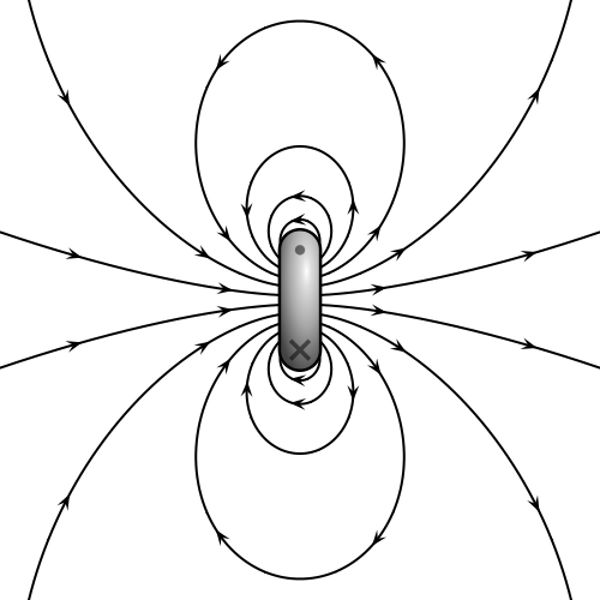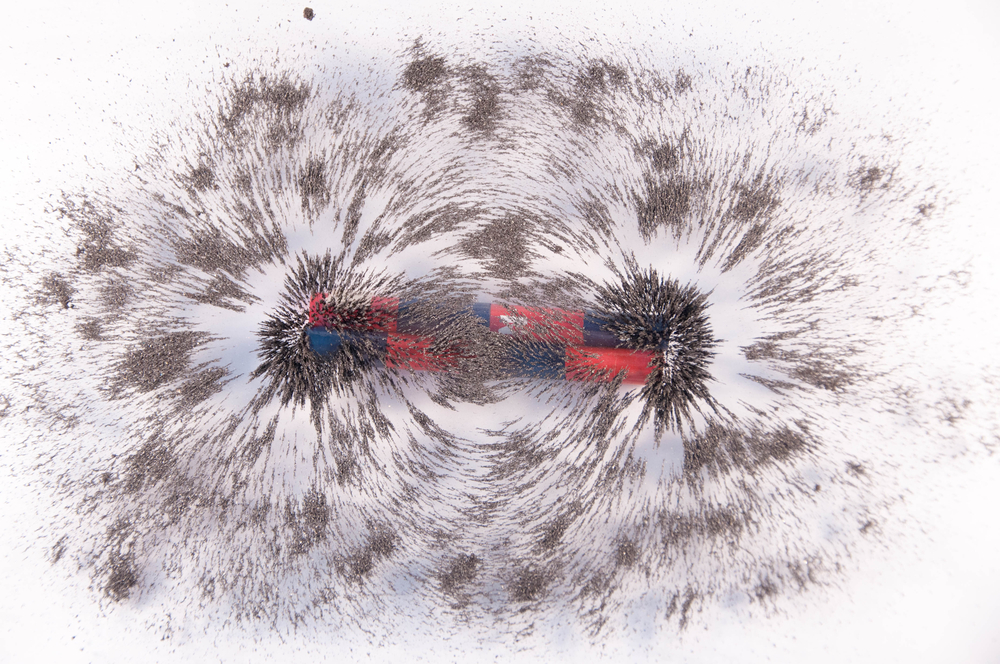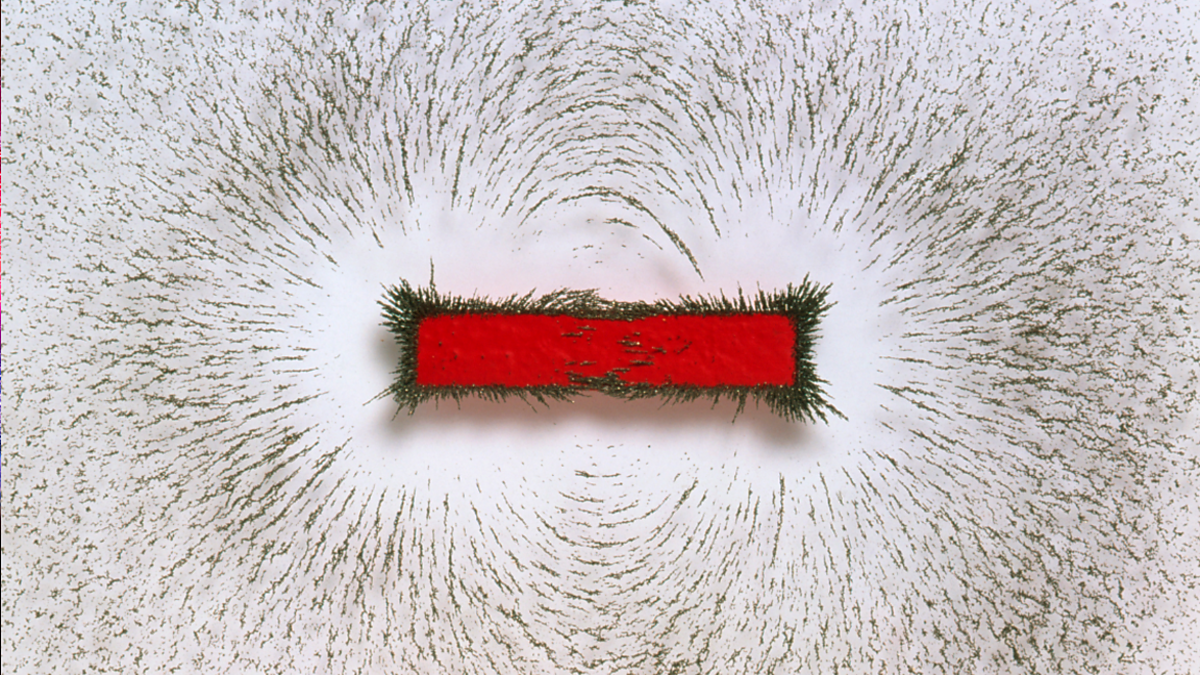Have you ever wondered if humans could have a secret superpower? What if we could feel something as invisible and mysterious as magnetic fields? Before you start picturing yourself as Magneto from X-Men, let’s dive into the fascinating world of magnetic fields and the intriguing possibility of human magnetoreception.
While animals like birds, bees, and turtles are known to sense magnetic fields to navigate the world, the question remains: Can people feel magnetic fields? Could there be an undiscovered human ability hiding in plain sight?

To tackle the question of whether humans can feel magnetic fields, we first need to understand what they are. A magnetic field is an invisible force created by electrically charged particles in motion. This force surrounds magnetic objects like the Earth, magnets, and even the devices we use daily.
The most significant magnetic field in our lives is generated by the Earth itself. The Earth’s magnetic field, also called the geomagnetic field, extends from the planet’s core into outer space, shielding us from harmful solar radiation and cosmic particles. Think of it as an invisible protective bubble!
Examples of Magnetic Fields in Daily Life
Magnetic fields aren’t just a natural phenomenon; they’re woven into our modern world:
- Electronics: From your phone to your microwave, magnetic fields play a critical role in making tech work.
- Medical Imaging: Ever had an MRI? This imaging technology relies on powerful magnetic fields to create detailed images of the body.
- Transportation: Electric trains and magnetic levitation (maglev) trains use magnetic fields to zoom passengers around.
We might not feel these fields directly, but their impact on our lives is undeniable. However, before you start blaming a headache on your Wi-Fi router, remember that most man-made magnetic fields are far too weak to be felt.
Fun Fact – Magnetic Poles and Your Compass
Ever used a compass to find your way? The tiny magnetic needle aligns with the Earth’s magnetic field, pointing north. But here’s the kicker: the magnetic north pole is constantly on the move due to changes in the Earth’s core. It’s currently speeding across the Arctic at about 55 kilometers per year. Talk about a magnetic personality!

Magnetoreception in Nature
What Is Magnetoreception?
Magnetoreception is a fascinating biological ability that allows certain organisms to sense magnetic fields and use them for orientation, navigation, and migration. For many creatures, it’s like having an internal GPS system, one that doesn’t need Wi-Fi or satellites to work.
This ability is especially useful for animals that travel vast distances. Birds, for example, rely on magnetoreception to navigate during their long migrations. It’s as if they have a built-in compass that helps them know where to go, even when the skies are cloudy, and landmarks are out of sight.
Animals With Magnetic Superpowers
Magnetoreception isn’t just a party trick—it’s a survival tool. Here are some incredible examples:
- Birds: Pigeons, robins, and other migratory birds are famous for their magnetic sense. Some studies suggest they detect magnetic fields using specialized cells in their beaks or eyes.
- Sea Turtles: Sea turtles can return to the very beach where they were born, guided by the Earth’s magnetic field.
- Sharks: Some species of sharks have sensory organs called ampullae of Lorenzini, which help them detect magnetic fields underwater.
- Bees: These buzzing little workers can use magnetic fields to orient their hives and navigate to flowers.
- Monarch Butterflies: These colorful insects use magnetoreception during their epic migration to Mexico.
How Does Magnetoreception Work?
Animals rely on two primary mechanisms to detect magnetic fields:
- Magnetite-Based Detection:
Magnetite, a naturally occurring magnetic mineral, is found in the bodies of many animals. For example, birds are thought to have magnetite deposits in their beaks, which may help them “feel” the Earth’s magnetic field. - Cryptochrome Proteins:
Cryptochromes are light-sensitive proteins found in the eyes of many animals. These proteins may enable animals to “see” magnetic fields as visual patterns or colors. For example, robins have been shown to rely on cryptochromes to navigate in low-light conditions.
Case Study – The Mystery of Pigeon Navigation
Pigeons are famous for their homing ability, but how do they do it? Scientists believe pigeons use a combination of visual landmarks and magnetoreception. Research suggests they may have magnetite-based receptors in their beaks, as well as cryptochrome proteins in their eyes, giving them a magnetic sense that helps them find their way home.
Interestingly, experiments have shown that disrupting a pigeon’s ability to sense magnetic fields (using magnetic interference) can throw off their navigation, proving how essential this sense is for them.
Nature’s ability to harness magnetic fields is nothing short of magical, but it’s firmly grounded in science. So, if animals can detect magnetic fields with such precision, it begs the question: could humans possess a similar capability?

Can Humans Detect Magnetic Fields?
The Science of Human Magnetoreception
Now comes the big question: Can people feel magnetic fields? While animals like birds and turtles have demonstrated clear abilities to sense magnetic fields, the evidence for humans is less definitive. However, that doesn’t mean it’s a closed case. Over the years, researchers have conducted intriguing experiments to explore whether humans have this hidden sense.
Some scientists suggest that humans might have a latent ability to detect magnetic fields, even if it’s not as finely tuned as in other animals. Could it be that we’ve simply lost this skill over time, or perhaps we’re just not looking in the right place?
The Role of Magnetite in Humans
One of the most compelling pieces of evidence for human magnetoreception comes from the discovery of magnetite in the human brain. Magnetite is a naturally magnetic mineral, and small amounts of it have been found in the tissues of the human brain, particularly in the hippocampus—a region associated with memory and navigation.
Hypothesis:
Some researchers believe that these magnetite particles might serve as tiny compasses, giving us the ability to detect changes in the Earth’s magnetic field. However, this theory is still under investigation, and so far, there’s little conclusive evidence that magnetite in humans is functional for sensing magnetic fields.
Cryptochrome in Humans
Another potential clue lies in cryptochrome proteins, which are present in the human eye. These proteins play a role in regulating circadian rhythms (our internal body clocks), but scientists speculate they might also help us detect magnetic fields.
A groundbreaking study in 2019 showed that human brain activity changed when exposed to rotating magnetic fields. Participants in the study were placed in a specially shielded room where magnetic fields could be precisely controlled. Researchers observed changes in alpha brainwaves—a type of brain activity associated with relaxation and focus—when the magnetic field shifted.
While these findings are fascinating, they don’t definitively prove that humans can consciously sense magnetic fields. It’s possible that any magnetoreceptive ability in humans operates at a subconscious level, influencing our behavior in subtle ways without us realizing it.
Anecdotal Evidence and Sensory Perceptions
Beyond the lab, some people claim to have a “sixth sense” for magnetic fields. For instance, there are reports of individuals feeling uneasy or disoriented in areas with strong electromagnetic interference, like near power lines or electrical substations.
While intriguing, most of these accounts remain anecdotal and haven’t been rigorously tested. Some scientists argue that what people interpret as sensing magnetic fields might actually be due to other factors, such as subtle vibrations or psychological effects.
Key Findings in Human Magnetoreception Studies
| Study | Key Findings | Significance |
|---|---|---|
| 2019 Alpha Brainwave Study | Brain activity changed in response to rotating magnetic fields. | Suggests subconscious magnetoreception. |
| Magnetite Discovery in Humans | Magnetite found in the human brain, particularly in areas related to memory and navigation. | Raises questions about its functionality. |
| Behavioral Anecdotes | People claim to feel electromagnetic interference in certain environments. | Lacks scientific validation. |
So, what does this all mean? While there’s some tantalizing evidence that humans might be able to detect magnetic fields, it’s far from conclusive. Research is ongoing, and scientists are exploring whether this sense could play a role in navigation, orientation, or even our well-being.

Evidence Supporting Human Magnetoreception
Experimental Studies on Human Magnetoreception
Scientific curiosity about human magnetoreception has led to fascinating experiments. These studies aim to determine whether we can detect magnetic fields consciously or subconsciously. While the results are often debated, they provide valuable insights into our potential magnetic sensitivity.
One prominent study, conducted in 2019, placed participants in a Faraday cage (a room that blocks external electromagnetic interference). Inside, researchers manipulated magnetic fields and observed how the brain responded. The results showed changes in participants’ alpha brainwaves when the magnetic field rotated. Alpha waves are linked to relaxation and alertness, suggesting the brain may be subconsciously processing magnetic field information.
Interesting Twist:
Not all participants showed the same response. This variability raises questions about whether some people might have a more developed sensitivity to magnetic fields than others. Could this be a dormant trait that only certain individuals retain?
Evidence from Evolution
The evolutionary perspective provides intriguing context for human magnetoreception. Many animals rely on magnetic fields for survival, from birds navigating during migration to fish detecting underwater currents. Humans share evolutionary pathways with these creatures, so it’s plausible we inherited some form of this ability.
However, as we developed tools, maps, and technology, we may have lost the need for magnetoreception. This idea aligns with the “use it or lose it” principle in evolution, where traits that no longer serve a purpose fade over generations.
Anecdotal Evidence – Humans and Navigation
While scientific evidence is still emerging, anecdotal stories add a layer of intrigue. Some individuals report uncanny navigational abilities, claiming they can instinctively find their way without maps or GPS. Others say they experience a “gut feeling” when moving in certain directions.
For example, the Polynesian navigators, famous for their ability to traverse vast ocean distances, relied on environmental cues like the stars, waves, and perhaps even magnetic fields. While their skills are primarily attributed to observational mastery, some researchers hypothesize that subconscious magnetoreception might have played a role.
The Subconscious Magnetoreceptor Hypothesis
A recurring theme in human magnetoreception studies is the idea that any sensitivity we have operates subconsciously. Unlike birds or turtles, who actively use this sense for navigation, humans might process magnetic field information below the level of conscious awareness.
This could explain phenomena like:
- Feeling “off” in certain locations: Could subtle magnetic anomalies trigger this reaction?
- Spontaneous directional awareness: The occasional sense of “this way feels right.”
The Role of Sensory Integration
Human perception relies heavily on the integration of sensory inputs. If magnetoreception exists, it could be another layer of information processed alongside sight, sound, and touch.
For instance:
- A shift in magnetic fields might subtly influence our sense of direction.
- Environmental factors like temperature, light, and magnetic fields could interact to shape our spatial awareness.
While this hypothesis is still speculative, it opens exciting possibilities for future research.
The evidence supporting human magnetoreception remains a mix of tantalizing studies, evolutionary hints, and compelling anecdotes. While we’re far from proving that humans can feel magnetic fields, the journey to uncover this mystery is filled with fascinating discoveries about how we interact with the world around us.

The Debate and Skepticism
Why Some Scientists Doubt Human Magnetoreception
As fascinating as the idea of human magnetoreception is, it remains highly controversial in the scientific community. While some experiments suggest a possible subconscious ability to sense magnetic fields, skeptics argue that the evidence is too weak, inconsistent, or influenced by external factors to draw definitive conclusions.
One major hurdle is the replication problem—the gold standard for scientific credibility. Studies investigating human magnetoreception often yield mixed results, with some participants showing responses to magnetic fields while others do not. Without consistent, repeatable evidence, it’s challenging to confirm that magnetoreception exists in humans.
Common Critiques Include:
- Small Sample Sizes: Many studies involve a limited number of participants, reducing their statistical power.
- Uncontrolled Variables: Factors like psychological bias, electrical noise, or participant expectations can skew results.
- Subjective Responses: Anecdotal evidence and self-reported sensations are difficult to validate scientifically.
The Role of Cognitive Bias
One explanation for why people might think they can sense magnetic fields lies in cognitive bias. Humans are wired to find patterns, even when none exist. This can lead to a phenomenon known as confirmation bias, where people interpret random feelings or events as proof of their ability to detect magnetic fields.
For example:
- If someone feels disoriented near a power line, they might attribute it to sensing magnetic interference.
- In reality, the cause could be something mundane, like noise, vibrations, or even psychosomatic effects.
Alternative Explanations for Experimental Results
Even when scientific studies find changes in brain activity in response to magnetic fields, skeptics argue that these results might not indicate true magnetoreception. Here are some alternative explanations:
- Electrical Noise in Equipment:
Sensitive experimental setups can sometimes pick up unintended electrical interference, which may affect results. - Brain Activity from Non-Magnetic Stimuli:
The brain is highly responsive to sensory input. Subtle environmental factors, such as temperature changes or light fluctuations, might trigger similar brainwave patterns to those attributed to magnetic fields. - Random Neural Activity:
The human brain generates constant electrical activity. Apparent responses to magnetic fields could simply be coincidences or random fluctuations.
The Placebo Effect in Magnetoreception Studies
One of the quirkiest aspects of human psychology is the placebo effect—the phenomenon where people experience real changes simply because they believe something is happening. In studies involving magnetic fields, participants who think they are exposed to magnetic stimuli might unconsciously alter their behavior or report sensations, even if no field is present.
Researchers attempt to control for this by using blinded studies, where participants don’t know whether they’re being exposed to a magnetic field. However, the placebo effect can still sneak in, complicating interpretations of the data.
Common Arguments For and Against Human Magnetoreception
| Argument | Proponents’ View | Skeptics’ View |
|---|---|---|
| Brainwave Changes in Magnetic Fields | Evidence of subconscious magnetoreception. | Could be caused by random neural activity or other stimuli. |
| Evolutionary Connection to Animals | Humans share ancestry with animals that have magnetoreception. | Evolution may have phased out this ability in humans. |
| Anecdotal Navigation Stories | Suggest some people have retained this skill. | Subjective reports lack scientific rigor or validation. |
| Discovery of Magnetite in the Brain | Magnetite might function as a biological compass. | There’s no proof it plays a role in magnetic field detection. |
A Balanced Perspective
While skepticism is healthy in science, it’s important to remain open to possibilities. The absence of conclusive evidence doesn’t mean human magnetoreception is impossible—it simply means we haven’t figured out how to measure or understand it yet. Science is full of discoveries that were once dismissed as unlikely or absurd.
The debate around human magnetoreception is a reminder of the complexities of studying human perception and behavior. On one hand, there’s exciting evidence suggesting we might have an untapped sixth sense. On the other hand, significant hurdles in experimental design and interpretation make it difficult to confirm this ability.